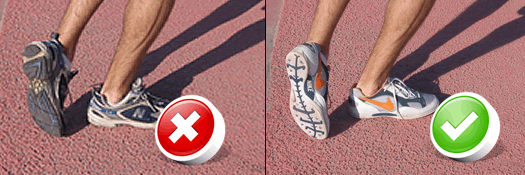High Jump Tips
Most of the teacher thought they cannot teach high jump well. Actually there are a lot of high jump work out and skills should be taught to make sure the pupils are save.
Without a good set of high-jump shoes that have both toe and heel spikes, you not only lose the solid plant you need to transfer your running speed into vertial acceleration, but you also risk badly injuring your ankle and causing shin splints.
At most take 7 warm-up jumps, but try to keep it at 5 or less. If you can do with even less than that, do it. The more you jump, the more you are going to waste your energy.
If you need to get your legs warm, jog around the track and do some short, light sprints, but don't use jumps to get your muscles warm. Jumps take a lot out of your lets and body, energy that you will need once the competition begins.
Replace the bar
Most of the teacher thought they cannot teach high jump well. Actually there are a lot of high jump work out and skills should be taught to make sure the pupils are save.
Use the Right Shoes
Too many jumpers are either jumping in regular track spikes or in spikeless basketball or running shoes. Using spikes, most jumpers can gain at least 6", if not 12" on their current best. The reason being is that high jump is all about taking horizontal speed and turning it into vertical pop, and taking the angle of your body from the curve to flip you over the bar.Without a good set of high-jump shoes that have both toe and heel spikes, you not only lose the solid plant you need to transfer your running speed into vertial acceleration, but you also risk badly injuring your ankle and causing shin splints.
 |
Save Your Legs During Warmup
When you are warming up,don't take too many jumps. There is no need. When you do take jumps, make sure you are doing your full routine before each one including your pre-jump ritual. Treat it like a legitimate jump so that when it comes time to do the real thing, you are confident you can succeed.At most take 7 warm-up jumps, but try to keep it at 5 or less. If you can do with even less than that, do it. The more you jump, the more you are going to waste your energy.
If you need to get your legs warm, jog around the track and do some short, light sprints, but don't use jumps to get your muscles warm. Jumps take a lot out of your lets and body, energy that you will need once the competition begins.
Replace the bar
The first step in developing high jumpers is to make them comfortable landing on their backs. The worst thing you can do, Particularly with a young person who's come to you with a desire to learn to high jump, is to turn him/her off to the sport with a rough would-be high jumpers to knock the bar over, land on it a couple times, then tell themselves they should find another sport where you don't end up with a metal bar poking you in the back.
When you try these or other drills with new high jumpers, put a rope(a cord or a string will also work) between the uprights. Put some type of weight on the rope, like a bag or sock full of sand, to keep it in place. It doesn't have to be perfectly taut to do beginning drills. And when jumpers knock the rope out of place, it won't hurt if they land on it.
 |
Drill- Back Flips:
To start getting your jumpers comfortable with landing in the pit, have them stand with their heels against the front of the pit, with the "bar"(rope, cord, etc) low, and have them jump over the rope and land on their backs. At this point, don't worry about getting their feet up in the air.
When the jumpers are comfortable landing in the pit on their backs, tell them to repeat the drill, but this time make sure they can see their hands and feet when they're in the air. This will begin teaching them to clear the bar in a correct.

